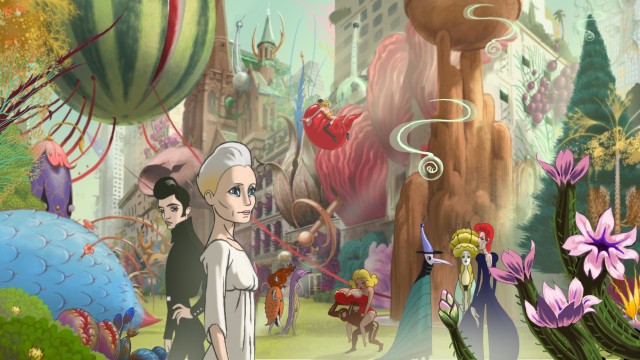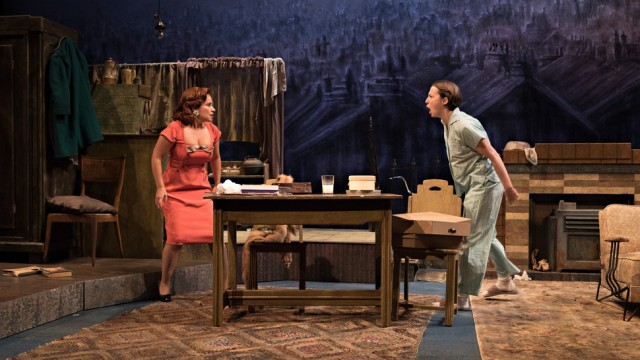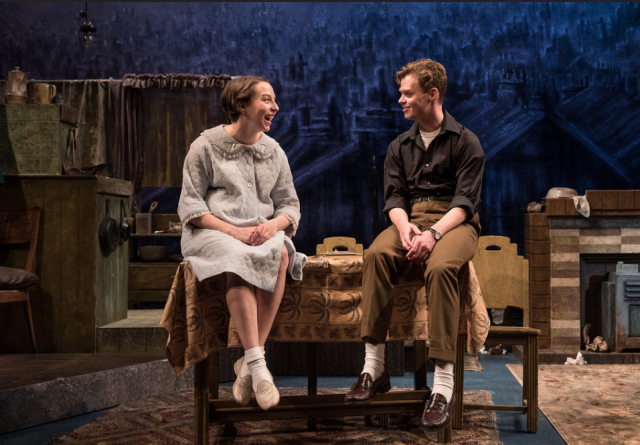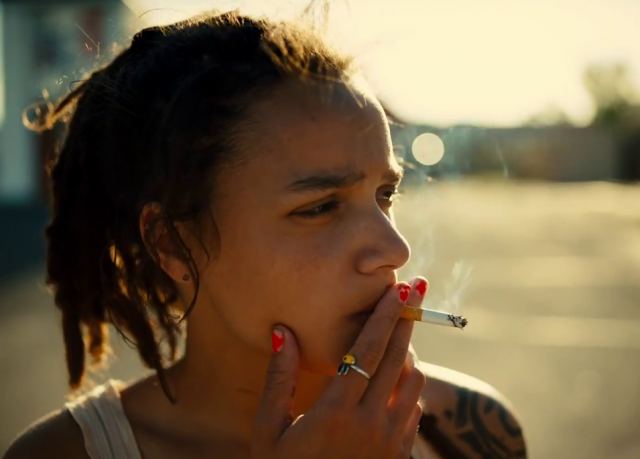
Sasha Lane makes a compelling debut in Andrea Arnold’s extraordinary AMERICAN HONEY
AMERICAN HONEY (Andrea Arnold, 2016)
Landmark Sunshine Cinema, 143 East Houston St. between First & Second Aves., 212-330-8182
AMC Loews Lincoln Square 13, 1998 Broadway at 68th St.
Opens Friday, September 30
www.americanhoney-movie.com
 Andrea Arnold’s fourth feature film is an exhilarating and daring whirlwind epic about marginalized college-age youth trying to make a go of it in contemporary America. In American Honey, her third Grand Jury Prize winner at Cannes (following Fish Tank and Red Road), Arnold goes on the road with the 071 mag crew, a group of itinerant high school dropouts and runaways who cross middle America in a van, selling magazine subscriptions door-to-door. As in all of her films, Arnold casts many nonprofessional actors, including Sasha Lane, who she discovered on a Florida beach during spring break. Lane makes a dazzling debut as Star, a young woman in an extremely dysfunctional family who is captivated by Jake (Shia LaBeouf) and his friends’ antics in a Walmart. Lured in by Jake’s seductive charm, she runs away from home and joins the ragtag bunch of more than a dozen lost souls who have formed a kind of unique family of their own. Led by the tough Krystal (Riley Keough) and the bold Jake, the mag crew spends its days trying to sell subscriptions for cash, making their way through various communities in Oklahoma, Kansas, Missouri, Iowa, Nebraska, and North Dakota. At night they stay at motels and party all night long, drinking, dancing, singing, and goofing around.
Andrea Arnold’s fourth feature film is an exhilarating and daring whirlwind epic about marginalized college-age youth trying to make a go of it in contemporary America. In American Honey, her third Grand Jury Prize winner at Cannes (following Fish Tank and Red Road), Arnold goes on the road with the 071 mag crew, a group of itinerant high school dropouts and runaways who cross middle America in a van, selling magazine subscriptions door-to-door. As in all of her films, Arnold casts many nonprofessional actors, including Sasha Lane, who she discovered on a Florida beach during spring break. Lane makes a dazzling debut as Star, a young woman in an extremely dysfunctional family who is captivated by Jake (Shia LaBeouf) and his friends’ antics in a Walmart. Lured in by Jake’s seductive charm, she runs away from home and joins the ragtag bunch of more than a dozen lost souls who have formed a kind of unique family of their own. Led by the tough Krystal (Riley Keough) and the bold Jake, the mag crew spends its days trying to sell subscriptions for cash, making their way through various communities in Oklahoma, Kansas, Missouri, Iowa, Nebraska, and North Dakota. At night they stay at motels and party all night long, drinking, dancing, singing, and goofing around.
The tight-knit group consists of Shaunte (Shawna Rae Moseley, the real-life owner of the mag crew’s pit bull), Pagan (Arielle Holmes, who detailed her own troubles in Heaven Knows What), Katness (former exotic dancer Crystal B. Ice), QT (Verronikah Ezell, who is raising a daughter with her wife), Billy (singer-songwriter Chad McKenzie Cox), Austin (former high school football player Garry Howell), Sean (construction worker Kenneth Kory Tucker, who is dating Moseley), JJ (Raymond Coalson), Kalium (skateboarder Isaiah Stone), Runt (Dakota Powers), Corey (McCaul Lombardi), and Chris (Christopher David Wright), most of whom revel in their freedom, unworried about parents, the government, or other authority figures. Meanwhile, Krystal is a kind of modern-day Fagin, threatening to kick out poor performers, forcing those with the lowest sales figures into brutal fistfights with each other. The street-smart but sensitive Star does what she needs to survive, including getting into cars and trucks with men who have something more than magazines on their mind, although she is disturbed by Jake’s lies and how he and others steal from customers. The film is a breathtaking coming-of-age tale not just for Star but for this entire generation of kids who have been shut out of mainstream society, for whatever reason, but are not giving up on their dreams.

Jake (Shia LaBeouf) and Star (Sasha Lane) encounter some major trouble in exhilarating road-trip movie
Inspired by a 2007 New York Times article by Ian Urbina that detailed the very real and harsh story of mag crews, Arnold traveled across parts of America by herself in researching the film, then had members of the cast actually try to sell magazine subscriptions in Kansas City. The film was shot in fifty-six days as the cast and a limited crew traveled in vans and stayed in motels. Cinematographer Robbie Ryan, who has photographed all four of Arnold’s feature films (as well as Philomena and several documentaries), does a superb job of capturing the open road, the Bible Belt neighborhoods, and the wild abandon and exciting energy exhibited by the mag crew, who were allowed to develop their characters and improvise. The soundtrack is critical to the film, and it boasts a wide variety of music, with songs by E-40, the Raveonettes, Ciara featuring Ludacris, Bruce Springsteen, Jeremih, Mazzy Star, Carnage, Razzy Bailey, Kevin Gates, Quigley, MadeinTYO, Lady Antebellum, and others. The actors, most of whom are making their first cinematic appearances, form a tight-knit family that is thrilling to watch develop. LaBeouf (Transformers, Nymphomaniac) gives one of his best performances as the hard-to-figure-out Jake, while Lane, who has moved to Los Angeles to continue acting, is mesmerizing as Star, whose problems are emblematic of so much of what is wrong in today’s society. The film is very much about the hopes and dreams of this lost generation — and how the American dream has failed them. A 162-minute film about disaffected youth selling magazine subscriptions in the twenty-first century might not sound like a slam dunk, but Arnold, in her first film made in the States, has created an unforgettable vision of the country today. “We explore, like, America; we party. Come with us,” Jake tells Sasha early on. We’re glad we went along for the ride too; so will you. American Honey opens September 30 at the Landmark Sunshine and Loews Lincoln Square, the same day that the New York Film Festival begins. Curiously, Arnold was the inaugural 2013 filmmaker in residence at the Film Society of Lincoln Center, the host of the festival, but American Honey was not selected for the fifty-fourth annual event; instead, the film had its New York premiere at Lincoln Center earlier this month.
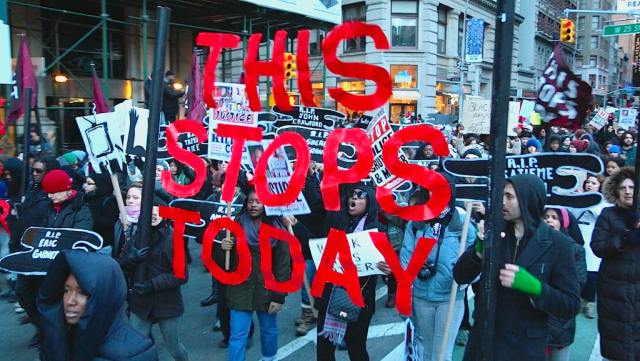

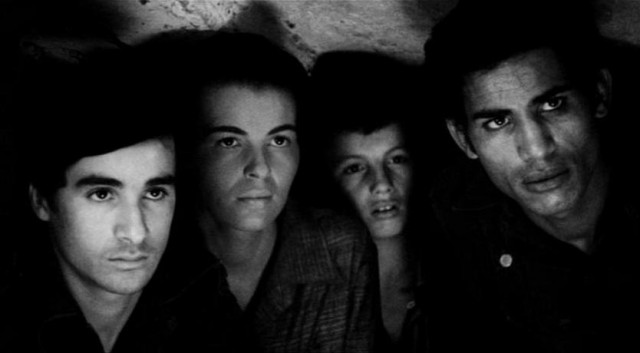
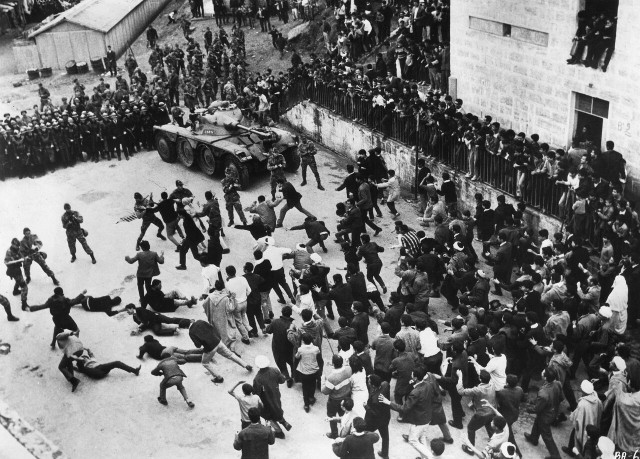
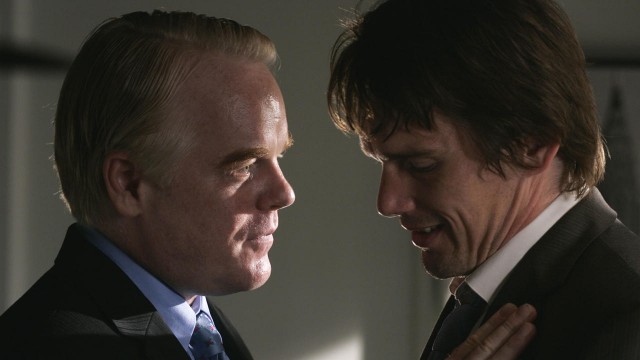
 Sidney Lumet spins an intriguing web of mystery and severe family dysfunction in Before the Devil Knows You’re Dead. Andy (Philip Seymour Hoffman) and Hank (Ethan Hawke) are very different brothers who are both in desperate financial straits. Andy, a real estate exec, has a serious drug problem and a fading marriage to his sexy but bored young wife (Marisa Tomei), while ne’er-do-well Hank can’t afford the monthly child-support payments to his ex-wife (Aleksa Palladino) and daughter (Amy Ryan). Andy convinces Hank to knock off their parents’ (Albert Finney and Rosemary Harris) jewelry store, but when things go horribly wrong, everyone involved is forced to face some very difficult situations, leading to a harrowing climax. Seymour and Hawke are both excellent, the former cool, calm, and collected, the latter scattershot and impulsive. Tomei gives one of her finest performances as the woman sleeping with both brothers. Lumet tells the story through a series of flashbacks from various characters’ point of view, with fascinating overlaps — although a bit overused — that offer different perspectives on critical scenes. Hoffman chose the role of Andy over Hank, which leads to several surprises, including an opening scene you will never forget. Adapted from a script by playwright Kelly Masterson — whom Lumet had never met or even spoken with — Before the Devil Knows You’re Dead (the title comes from an Irish toast that begins, “May you be in heaven half and hour…”) is a thrilling modern noir from one of the masters of melodrama. The underrated film is screening on October 1 at 2:30 in the Museum of the Moving Image series “Philip Seymour Hoffman: The Master,” a sixteen-film tribute to Hoffman, a native New Yorker who left us well before his time. The series continues through October 2 with such other Hoffman films as Paul Thomas Anderson’s Magnolia, Anthony Minghella’s The Talented Mr. Ripley, and Anton Corbjin’s A Most Wanted Man.
Sidney Lumet spins an intriguing web of mystery and severe family dysfunction in Before the Devil Knows You’re Dead. Andy (Philip Seymour Hoffman) and Hank (Ethan Hawke) are very different brothers who are both in desperate financial straits. Andy, a real estate exec, has a serious drug problem and a fading marriage to his sexy but bored young wife (Marisa Tomei), while ne’er-do-well Hank can’t afford the monthly child-support payments to his ex-wife (Aleksa Palladino) and daughter (Amy Ryan). Andy convinces Hank to knock off their parents’ (Albert Finney and Rosemary Harris) jewelry store, but when things go horribly wrong, everyone involved is forced to face some very difficult situations, leading to a harrowing climax. Seymour and Hawke are both excellent, the former cool, calm, and collected, the latter scattershot and impulsive. Tomei gives one of her finest performances as the woman sleeping with both brothers. Lumet tells the story through a series of flashbacks from various characters’ point of view, with fascinating overlaps — although a bit overused — that offer different perspectives on critical scenes. Hoffman chose the role of Andy over Hank, which leads to several surprises, including an opening scene you will never forget. Adapted from a script by playwright Kelly Masterson — whom Lumet had never met or even spoken with — Before the Devil Knows You’re Dead (the title comes from an Irish toast that begins, “May you be in heaven half and hour…”) is a thrilling modern noir from one of the masters of melodrama. The underrated film is screening on October 1 at 2:30 in the Museum of the Moving Image series “Philip Seymour Hoffman: The Master,” a sixteen-film tribute to Hoffman, a native New Yorker who left us well before his time. The series continues through October 2 with such other Hoffman films as Paul Thomas Anderson’s Magnolia, Anthony Minghella’s The Talented Mr. Ripley, and Anton Corbjin’s A Most Wanted Man.
 Writer-director Ari Folman imagines a sad but visually dazzling future in the spectacular fantasy The Congress. Inspired by Stanislaw Lem’s 1971 short novel The Futurological Congress, the film follows Robin Wright playing a fictionalized version of herself, an idealistic actress about to turn forty-five who has let her career come second to raising her two children, daughter Sarah (Sami Gayle) and, primarily, son Aaron (Kodi Smit-McPhee), who is slowly losing the ability to see and hear. Wright’s longtime agent, Al (Harvey Keitel), has a last-chance opportunity for her: Jeff Green (Danny Huston), the head of Miramount, wants to scan her body and emotions so the studio can manipulate her digital likeness into any role while keeping her ageless. They don’t want the modern-day Robin Wright but the young, beautiful star of The Princess Bride, State of Grace, and Forrest Gump. The only catch is that in exchange for a substantial lump-sum payment, the real Wright will never be allowed to act again, in any capacity. With no other options, she reluctantly takes the deal. Twenty years later, invited to speak at the Futurological Congress, she enters a whole new realm, a fully animated world where men, women, and children live out their entertainment fantasies. Shocked by what she is experiencing, Wright meets up with Dylan Truliner (Jon Hamm), who has been animating her digital version for years, as a revolution threatens; meanwhile, Green has another offer for her, even more frightening than the first.
Writer-director Ari Folman imagines a sad but visually dazzling future in the spectacular fantasy The Congress. Inspired by Stanislaw Lem’s 1971 short novel The Futurological Congress, the film follows Robin Wright playing a fictionalized version of herself, an idealistic actress about to turn forty-five who has let her career come second to raising her two children, daughter Sarah (Sami Gayle) and, primarily, son Aaron (Kodi Smit-McPhee), who is slowly losing the ability to see and hear. Wright’s longtime agent, Al (Harvey Keitel), has a last-chance opportunity for her: Jeff Green (Danny Huston), the head of Miramount, wants to scan her body and emotions so the studio can manipulate her digital likeness into any role while keeping her ageless. They don’t want the modern-day Robin Wright but the young, beautiful star of The Princess Bride, State of Grace, and Forrest Gump. The only catch is that in exchange for a substantial lump-sum payment, the real Wright will never be allowed to act again, in any capacity. With no other options, she reluctantly takes the deal. Twenty years later, invited to speak at the Futurological Congress, she enters a whole new realm, a fully animated world where men, women, and children live out their entertainment fantasies. Shocked by what she is experiencing, Wright meets up with Dylan Truliner (Jon Hamm), who has been animating her digital version for years, as a revolution threatens; meanwhile, Green has another offer for her, even more frightening than the first.